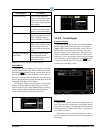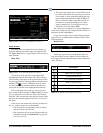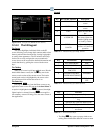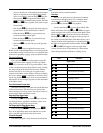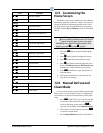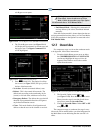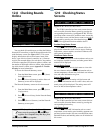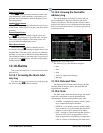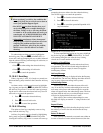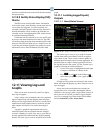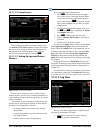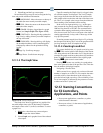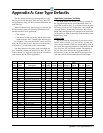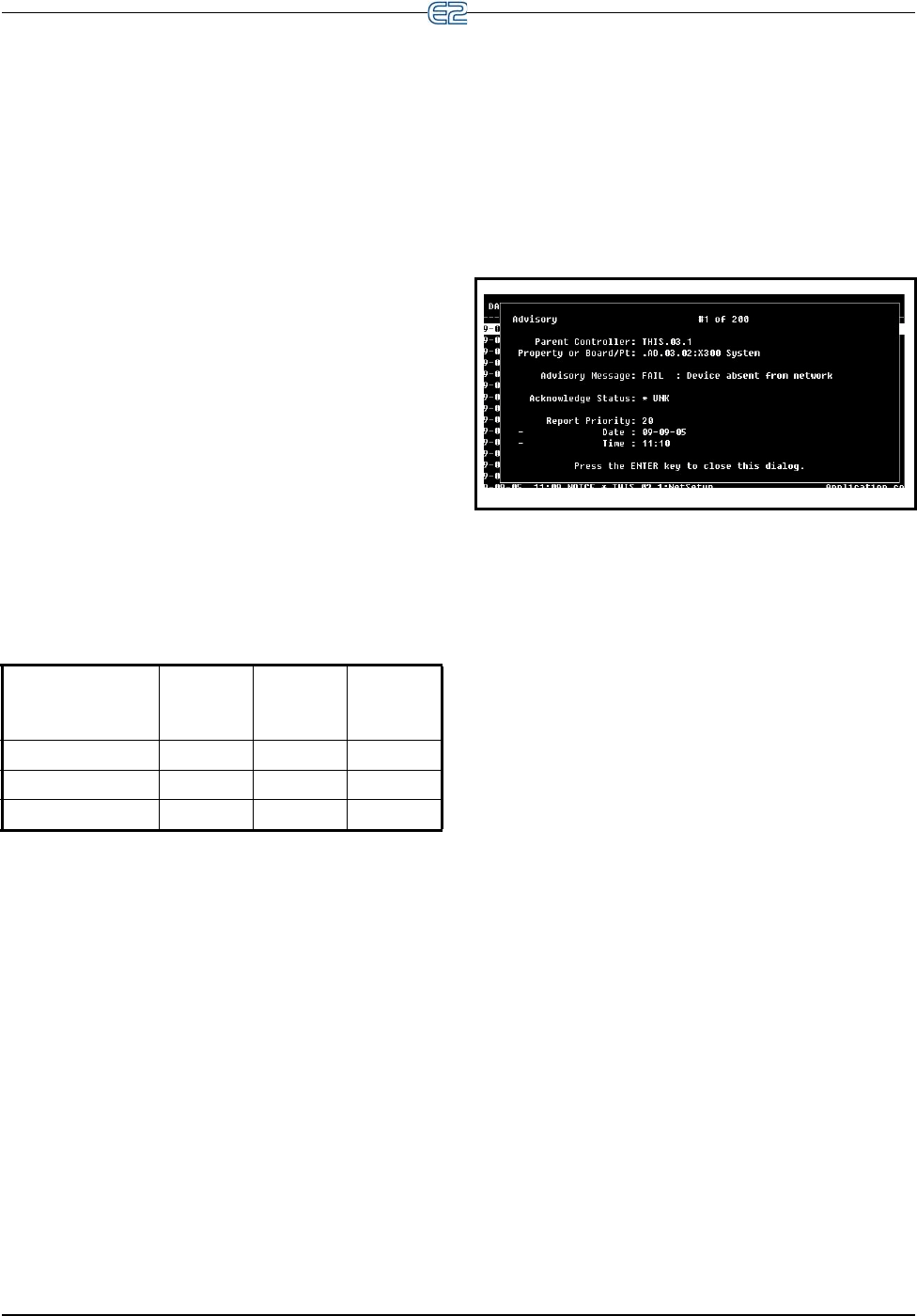
Alarms Operator’s Guide to Using the E2 • 12-13
Forced-To-Normal Alarms
For as long as the condition that caused the alarm mes-
sage exists, the State field will show either A
LARM,
NOTICE, or FAIL as appropriate to the alarm type. How-
ever, if the condition that caused the alarm,
notice, or fail-
ure is corrected, the message shown in the
State field will
change to signify the correction.
There are two ways an alarm, notice,
or failure condi-
tion may be corrected:
• Return-To-Normal - “Return-T
o-Normal” means
the condition that generated the alarm, notice, or
failure has returned to normal on its own, or the E2
has automatically corrected the condition. If an
alarm returns to normal, a “N-” will appear in front
of the alarm state in the State field.
• Reset (Forced)-To-Normal - “Reset-T
o-Normal”
means the E2 has been forced by a user to consider
the condition “normalized” for purposes of alarm
control. A Reset-To-Normal occurs when an alarm
is reset using the Alarm Reset button
(ALARM RST). If an alarm is forced to normal, an
“R-” will appear in front of the alarm state in the
State field.
Table 12-9 lists the nine possible state mess
ages as
they appear in the State field.
Table 12-9 - Alarm S
tates
Advisory Type Condition
S
till Exists
Condition
Returned To
Normal
Condition
Reset to
Normal
Alarms ALARM N-ALM R-ALM
Notices NOTCE N-NTC R-NTC
Failures FAIL N-FL R-FL
12.10.5 Ack/Reset State
The State field also shows whether or not an advisory
record has been acknowledged or reset by a user. If an
alarm has been acknowledged or reset, a dash “—” will
appear at the end of the State field. If an alarm has not
been acknowledged or reset, an asterisk “*” will appear at
the end of the State field.
12.10.6 Area Ctrl: Application:
Property
This column describes where the alarm, notice, or fail-
ure was generated from. Alarms
and notices can either be
generated within the E2 system or from an input value that
is higher or lower than an alarm or notice setpoint defined
during the system configuration process.
12.10.7 Advisory Message
The Advisory Message column is a brief description of
the alarm, notice, or failure. Because of screen size con-
straints, it is often the case that the full advisory message
wi
ll not be displayed in the Message field. To view the full
advisory message, as well as the alarm priority and other
important alarm information, press (EXPD INFO)
for Expanded Information.
Figure 12-21
- Expanded Info Screen
12.10.8 Acknowledging, Resetting,
and Clearing Log Entries
12.10.8.1 Acknowledging
When an alarm, notice, or failure is acknowledged,
the alarm stays in the Alarm Log, but all annunciation of
the alarm is suspended until the alarm is reset or cleared.
As stated in Section 12.10.5, the state of the alarm or
notice will also change to a dash “—” indicating acknowl-
edgement.
When you acknowledge an alarm, you prevent it from
ever
annunciating again in any way until you manually
reset or clear the alarm. A condition that causes an alarm
will never automatically return to normal when it is
acknowledged.
For setting acknowledging permissions, see Section
10.12.1, Changing Requir
ed User Access Levels.



